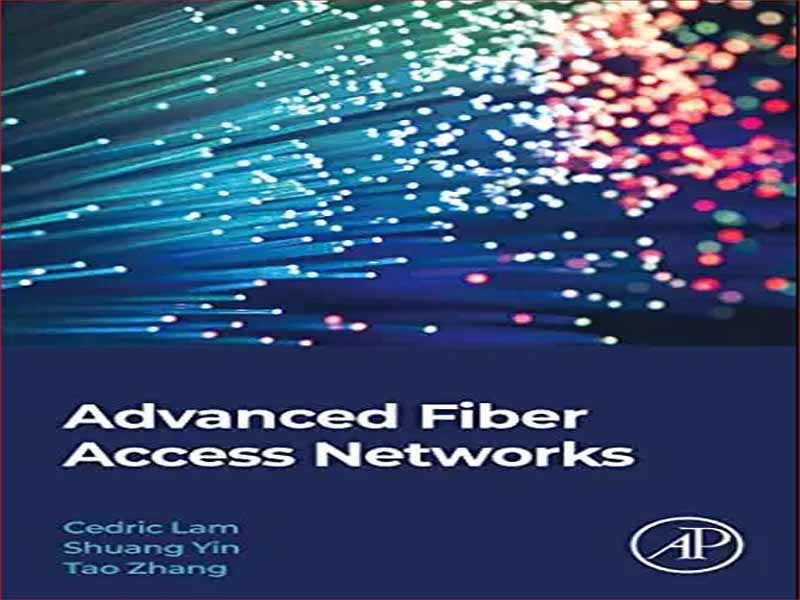- عنوان: Advanced Fiber Access Networks
- نویسنده: Cedric-F.-Lam,-Shuang-Yin,-Tao-Zhang
- حوزه: شبکه کامپیوتری
- تعداد صفحه: 287
- سال انتشار: 2022
- زبان اصلی: انگلیسی
- نوع فایل: pdf
- حجم فایل: 24.6 مگابایت
پس از بیش از 30 سال پیشرفت از تحقیق تا تجاری سازی، شبکه های دسترسی فیبر اکنون فناوری های بالغی هستند که به طور گسترده در سراسر جهان گسترش یافته اند. فناوریهای شبکه دسترسی نوری در قالب شبکههای نوری غیرفعال با قابلیت گیگابیت (G-PONs) کالایی شدهاند و در حجم حداقل چند ده میلیون واحد در سال ارسال میشوند. شرکتهای مخابراتی در سراسر جهان مشغول راهاندازی شبکههای فیبرتو خانه (FTTH) هستند تا برای برنامههای جدید اینترنتی آینده مانند پخش ویدیوی بیش از حد (OTT)، واقعیت افزوده (AR) / واقعیت مجازی (VR)، مشارکتی آماده شوند. بازیهای ویدیویی بیدرنگ آنلاین و میلیاردها اینترنت اشیا (IoT) جدید. چین، پرجمعیت ترین کشور جهان، دارای ضریب نفوذ FTTH بیش از 90 درصد است که نشان دهنده 380 میلیون خانوار متصل در پایان سال 2019 است و آنها مشغول حرکت به سمت فناوری های نسل بعدی PON هستند. اکثر مردم شبکه های دسترسی فیبر را به عنوان PON های مبتنی بر تقسیم زمان (TDM) می دانند. در واقع، کلمه “PON” (تقریبا همیشه به عنوان نوعی TDM-PON ذکر می شود) بیشتر به عنوان مترادف شبکه های دسترسی فیبر استفاده می شود. با این حال، TDM-PON تنها یکی از معماری های آخرین مایل است که به دلیل سادگی و مزایای اقتصادی آن، محبوب ترین برای برنامه FTTH پذیرفته شده است. برای برخی از کاربردهای دسترسی مانند fronthaul در شبکه های بی سیم، TDM-PON های بومی چالش های ذاتی خود را دارند و ممکن است انتخاب فناوری مناسبی نباشند. علاوه بر این، در یک شبکه دسترسی فیبر پهن باند واقعی سرتاسر، PON تنها آخرین مایل اتصال از دفتر مرکزی یک شرکت مخابراتی (CO) به محل مشتری نهایی را نشان میدهد. علاوه بر اتصال آخرین مایل PON، بسیاری از اجزای دیگر نیز برای یک شبکه دسترسی فیبر پهن باند به خوبی طراحی شده وجود دارند. خوانندگان از این کتاب متوجه خواهند شد که به سادگی استقرار نسل بعدی سیستم PON آخرین مایل ممکن است در واقع به مشکلات درست ناشی از افزایش تقاضای پهنای باند مشتری به دلیل سایر تنگناها و محدودیتهای شبکه نپردازد. سناریوهای استقرار نیز وجود دارد (به عنوان مثال، کابلهای فیبر نازک از CO یا ارتقاء شبکه اپراتور چند سرویس کابلی) که به معماریهای شبکه دسترسی فیبر جدید نیاز دارند، همانطور که در این کتاب خواهیم دید.
After more than 30 years of developments from research to commercialization, fiber access networks are now mature technologies that have been widely deployed around the world. Optical access network technologies in the form of gigabit-capable passive optical networks (G-PONs) have been commoditized and are shipping in volumes of at least multiple tens of millions of units per year. Carriers around the world are busy rolling out fiberto- the-home (FTTH) networks to prepare for new upcoming internet applications such as over-the-top (OTT) video streaming, augmented reality (AR)/virtual reality (VR), collaborative online real-time video gaming, and billions of new upcoming Internet of Things (IoT). China, the most populous nation in the world, boasts an FTTH penetration rate of more than 90%, representing 380 million households connected at the end of 2019, and they are busy moving into the next-generation PON technologies. Most people think of fiber access networks as time-divisionmultiplexing (TDM)-based PONs. In fact, the word “PON” (almost always implied as some form of TDM-PON) is mostly used as a synonym of fiber access networks. However, TDM-PON is only one of the last-mile architectures most popularly adopted for the FTTH application because of its simplicity and economic benefits. For some access applications such as fronthaul in wireless networks, native TDM-PONs have their inherent challenges and may not be the suitable technology choice. Furthermore, in a real end-to-end broadband fiber access network, PON only represents the last mile connection from a carrier’s central office (CO) to the end-user customer premise. Besides the PON last-mile connection, there are many other components coming into play for a well-designed broadband fiber access network. The readers will find out from this book that simply deploying the next-generation last-mile PON system may not actually address the right problems arising from the increasing customer bandwidth demands because of other network bottlenecks and limitations. There are also deployment scenarios (e.g., thin-fiber cables from COs or cable Multi-Service Operator network upgrades) that will require new fiber access network architectures, as we will see in this book.
این کتاب را میتوانید بصورت رایگان از لینک زیر دانلود نمایید.
Download: Advanced Fiber Access Networks




































نظرات کاربران